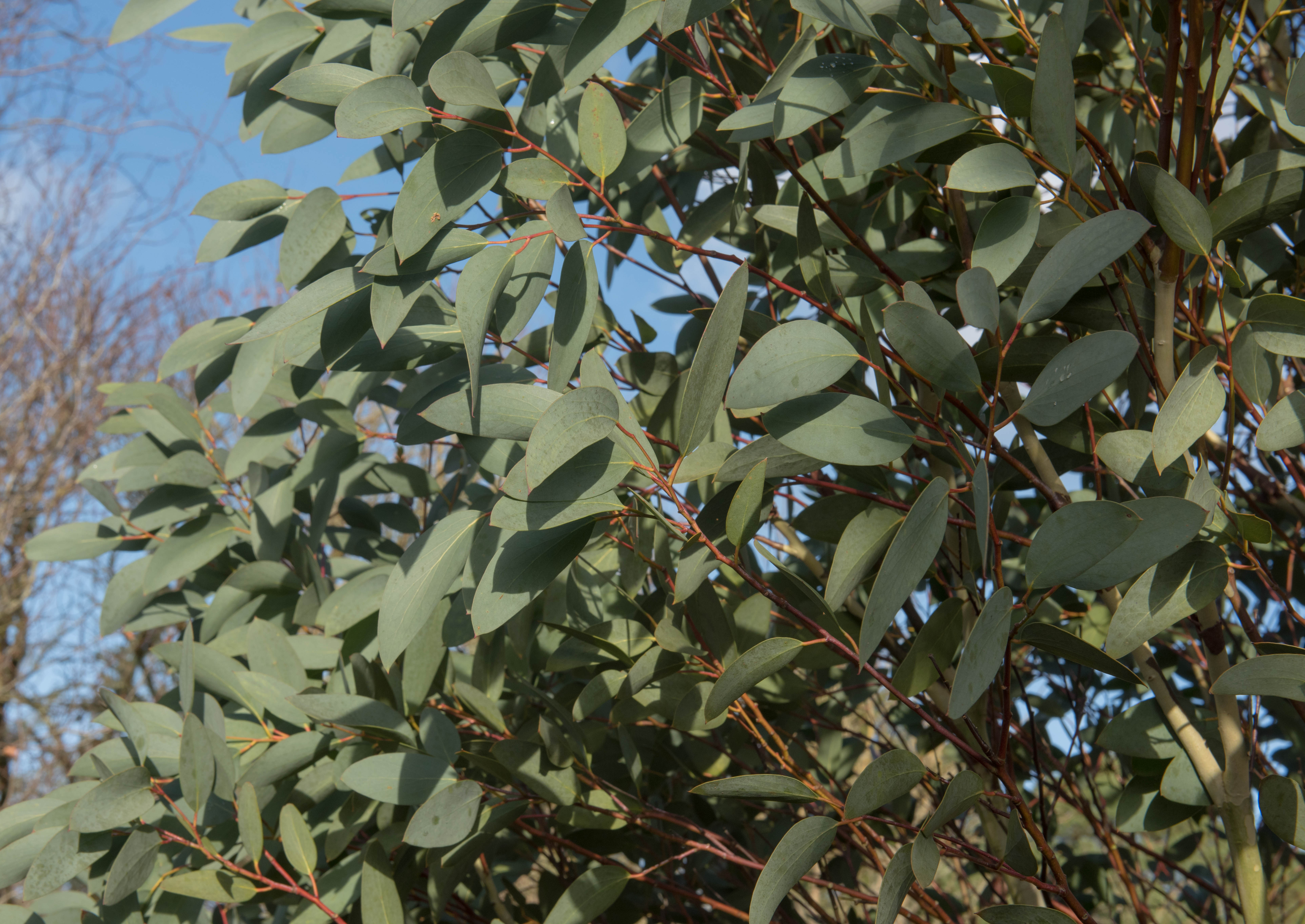Snow gum
(Eucalyptus pauciflora debeuzevillei)

Description
Eucalyptus pauciflora debeuzevillei, commonly known as Snow Gum, is a small to medium-sized tree that belongs to the family Myrtaceae. This evergreen species is native to Australia and is known for its distinctive white bark, which peels off to reveal patches of green and pink underneath. Snow Gum is a popular ornamental tree, prized for its unique appearance, drought tolerance, and adaptability to a range of growing conditions. In this article, we will explore the taxonomy, morphology, distribution, ecology, and cultivation of Eucalyptus pauciflora debeuzevillei in detail. Taxonomy The genus Eucalyptus is one of the most diverse groups of plants in the world, with over 700 species. Eucalyptus pauciflora debeuzevillei is a subspecies of Eucalyptus pauciflora, which is part of the subgenus Eucalyptus. This species was first described by the French botanist Henri Ernest Baillon in 1881. The specific epithet "pauciflora" means "few-flowered" in Latin, referring to the small number of flowers produced by the tree. Morphology Snow Gum is a small to medium-sized tree that typically grows to a height of 10-20 meters (33-66 feet) and a width of 5-10 meters (16-33 feet). The tree has a single trunk with a diameter of up to 60 centimeters (24 inches) and a dense, spreading crown. The bark of Snow Gum is one of its most distinctive features, with the smooth, white bark peeling off in thin flakes to reveal patches of green and pink underneath. The leaves of Snow Gum are evergreen and narrow, measuring 6-12 centimeters (2.4-4.7 inches) in length and 0.5-1 centimeter (0.2-0.4 inches) in width. The leaves are arranged alternately on the stems and have a glossy, dark green color on the upper surface and a lighter green color on the lower surface. The flowers of Snow Gum are small and white, with five petals and numerous stamens. The flowers are produced in clusters of three to seven and appear in the leaf axils in late spring and early summer. The fruit of Snow Gum is a woody, cup-shaped capsule that contains numerous small seeds. Distribution and Habitat Eucalyptus pauciflora debeuzevillei is native to southeastern Australia, where it is found in a variety of habitats, including montane and subalpine forests, woodlands, and heathlands. The subspecies is found at elevations of 600-1,800 meters (1,970-5,910 feet) above sea level and is adapted to cold and dry conditions. Ecology and Conservation Snow Gum plays an important ecological role in its native habitat, providing food and shelter for a variety of wildlife, including insects, birds, and mammals. The tree is an important food source for the endangered mountain pygmy possum (Burramys parvus), which feeds on the nectar and pollen of Snow Gum flowers. Eucalyptus pauciflora debeuzevillei is not considered a threatened species, although its habitat is subject to a range of threats, including habitat loss, fragmentation, and degradation due to human activities such as logging, grazing, and development. Cultivation Eucalyptus pauciflora debeuzevillei is a popular ornamental tree, prized for its unique appearance and adaptability to a range of growing conditions.
Taxonomic tree:







